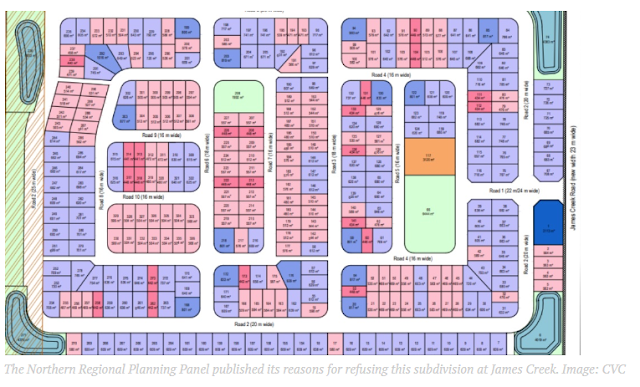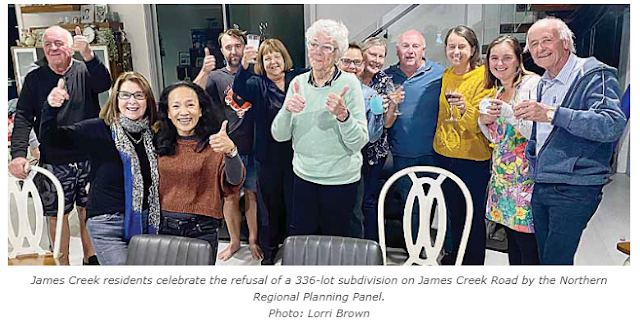Australian climate scientist Dr. Joëlle Gergis, ANU Fenner School of Environment and Society and a lead author on the Intergovernmental Panel on Climate Change (IPCC) Sixth Assessment Report, has recently written:
“The climate disasters unfolding in the northern hemisphere are a sign of what’s in store here, as governments fail to act on the unfolding emergency…..
...the possibility that the Earth might have already breached some kind of global “tipping point”. The term refers to what happens when a system crosses into a different state and stays there for a very long time, sometimes even permanently. We know that once critical thresholds in the Earth system are passed, even small changes can lead to a cascade of significantly larger transformations in other major components of the system. Key indicators of regional tipping points include dieback of major ecological communities….” [my yellow highlighting]
Such observations give pause for thought.
However, the elected Mayor of the third tier governing body for the Clarence Valley Local Government Area (LGA), Cr. Ian Tiley, is apparently comfortable with the idea of personally failing to act when it comes to any proposed phasing out of logging native forests in public hands within this LGA.
At least that is the impression he gives during a photo opportunity with representatives of the state government-dominated NSW logging industry.
Presumably Mayor Tiley is willing to ignore the fact that in 2021 & again in 2022 Australian university researchers warned that logging is not just increasing the risk of severe fires, but also the risk to human lives and safety.
Logging increases the probability of canopy damage by five to 20 per cent and leads to long-term elevated risk of higher severity fires, including canopy fires. Canopy fires are considered the most extreme form of fire behaviour and can be virtually impossible to control.
It has also been known for the last two decades that intact tree canopies can buffer against rising and increasingly record air/land temperatures due to the thermal insulation of forest canopies which protects biodiversity, allowing native flora and fauna to survive climate change-induced heat extremes better than those living on open land.
Even the NSW Dept. of Infrastructure, Planning and Natural Resources in Land Condition in the Clarence River Catchment: Report 1 - when addressing forestry as a land use - admitted back in 2014 that:
Management of forested areas for bushfire control purposes can threaten adjacent areas, cause habitat loss and encourage erosion. Public debate on this issue has been centred around the in-situ environmental impacts of the process but smoke drift over nearby population centres and the post burning effects on water quality after erosion events also impacts water supply for urban and industrial purposes. [my yellow highlighting]
Commercial logging activity occurs within the Clarence River catchment area and logged state forests do catch fire - as evidenced by Ellis State Forest near Dundurrabin south of Grafton during the 2019-20 bushfire season.
Like many other communities in the Northern Rivers region during the 2019-20 bushfire season, communities in the Clarence Valley can attest to the physical difficulties of living for days and sometimes weeks under smoke palls loaded with gases and particulate matter (including PM2.5) with a potential to affect the health.
According to the Dept. of Health's Bushfire smoke and health: Summary of the current evidence, 6 August 2020:
The Global Burden of Disease Study has shown that outdoor PM2.5 is the most important environmental risk factor in Australia, responsible for 1.6 percent of the total burden of disease in 2017.
Evidence shows that the likelihood of an individual experiencing health effects as a result of exposure to PM2.5 depends on a number of factors. These include: the concentration of PM2.5 in air, the duration of exposure; the person’s age and whether a person has existing medical conditions (particularly cardiorespiratory disease or asthma).
It is also acknowledged that while this document focusses on the evidence relating to the physical effects that may occur as a result of bushfires smoke, bushfires have much broader mental health and societal impacts.
Clarence Valley Independent, 30 August 2023:
 |
| *click on image to enlarge* |
“The Mayor also expressed his personal view, describing the timber industry as vital to the Clarence Valley.”
I wonder if Mr. Tiley will still be of that opinion over the next high-risk seven to seventeen years......

.jpg)
.jpg)




.jpg)






